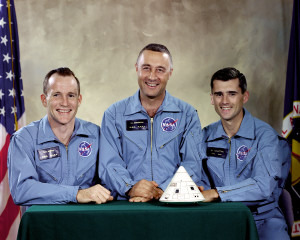Space travel is an incredibly risky business. Sadly, there have been lives lost in the effort to reach the stars. We all know the loss of the Space Shuttles Columbia and Challenger. I remember waking up that morning on February 1st, 2003, the morning after my 18th birthday, to see on the news that Columbia had failed on atmospheric re-entry, killing it’s crew.
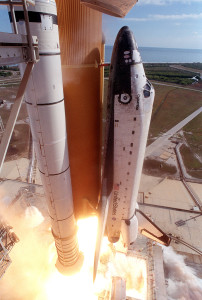
The launch of STS-107, the final flight of Columbia
As someone who grew up loving everything about space, I was heartbroken. Not just for human loss, or the loss of such a wonderful, historic machine as Columbia, but also that in my lifetime there was a disaster. That I woke up that morning to see the actual event unfold, and to know that for the next few years, our nations space program would come under scrutiny as an “unsafe waste of tax payer money.”
My mothers generation has it’s own disaster too, though. Back in Jaunary, 1986, when I was just under a year old, the shuttle Challenger, on only it’s 9th mission, was met with disaster as a failure in one of it’s solid rocket boosters caused the destruction of the shuttle, and the loss of it’s crew.
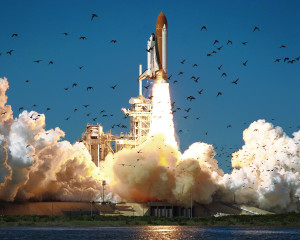
The launch of STS-51-L, the final flight of Challenger
I was just shy of a year old when this happened. My mother tells me that I saw the event happen. She was holding me, watching the launch, when the failure occurred. It’s strange to think, as far back as the event seems, that I actually would have seen it live, on TV. Of course I wouldn’t remember the event, but part of me thinks maybe seeing that beautiful machine rise could very well have spurred my interest in space. More likely, though the return to flight mission in September 1988 would be the event that would trigger this love. It would at least be something within the time frame of my absolute earliest memories, after all.
Whatever case, for my life, these are the two dark days of space flight. For many, these are the only accidents that are known about. But, there is one more event that most people have long forgotten about, or never heard of.
January 27th, 1967. The Apollo 1 fire.
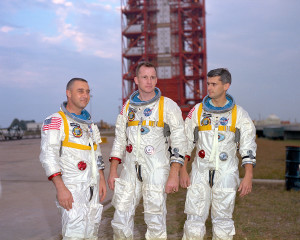
In the 1995 feature film, “Apollo 13”, the opening scene shows a depiction of the events that day, with narration by Walter Cronkite mentioning the event. As a kid seeing this movie, I was surprised to hear that such had happened. I had, my whole life, never heard a single thing about an “Apollo 1”. I always thought the first 6 Apollo’s were just unmanned tests, which is very common in most spacecraft testing phases. So, at only the age of 10, I was hunting for information for an event I never knew had happened. It seemed like the world had forgotten, and as someone who loved space travel, I felt a need to know what happened, who the people were, and how it affected our space program,.
Over the years, as I got older, and got access to the wonderful resource known as the internet, I would get answers to my questions.
Who was the crew?
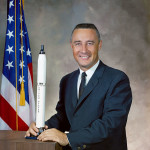 Virgil Ivan “Gus” Grissom
Virgil Ivan “Gus” Grissom
One of the original Mercury astronauts, the 2nd American and 3rd Human being in space. He also was commander of the first manned mission in the Gemini program, Gemini-3.
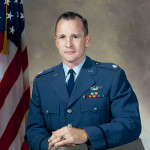 Edward Higgins White, II
Edward Higgins White, II
The first American to “walk” in space, on Gemini-4.
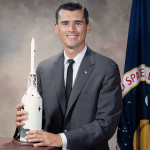 Roger Bruce Chaffee
Roger Bruce Chaffee
The rookie of the crew, Apollo 1 would be his first space flight. He was the CAPCOM for the Gemini-4 mission in which Ed White made his spacewalk.
These men were, on February 21st, 1967, to pilot the first manned Apollo mission, to test out the command module in Earth orbit and ensure the design worked properly for it’s future lunar missions. However, there were problems in the design of the craft. A “perfect storm” if you will, of design flaws, rushed construction, illogical changes and design details, all compounded with the use of a 100% pure oxygen environment made the vehicle, CSM-012, in it’s official identity from the factory, in effect, a giant bomb.
The crew knew there were problems with the ship. The early astronauts were military test pilots, and they knew when a vehicle had problems. It comes with the job, you could say, they could sense if the machine was capable or not.
This became the source of two jokes the crew played involving the ship. One involved Gus hanging a lemon in the capsule, saying that the ship was basically “no good” in reference to a used car being sold that is no good being called “a lemon.” The second, a much less light hearted joke, involved a parody of the official crew portrait showing the crew praying around a model of the craft.
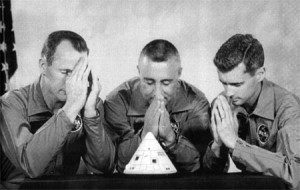 In hindsight, these should have been cause enough for someone to look and see the problems with the craft, but schedules were tight, and many things, such as the pure oxygen, had proven safe in the past, so no one thought much of the chance of something going wrong. If it did, it sure wouldn’t be on Earth. It would be out in space, where they could vent the cabin of air and stop the fire, or, in a worst case scenario, the crew would be lost in space, where no one could save them. Not on the ground, though. No one ever, for a moment, thought that anything could happen on the ground.
In hindsight, these should have been cause enough for someone to look and see the problems with the craft, but schedules were tight, and many things, such as the pure oxygen, had proven safe in the past, so no one thought much of the chance of something going wrong. If it did, it sure wouldn’t be on Earth. It would be out in space, where they could vent the cabin of air and stop the fire, or, in a worst case scenario, the crew would be lost in space, where no one could save them. Not on the ground, though. No one ever, for a moment, thought that anything could happen on the ground.
Then, at 6:31 it happened. A spark in some damaged wiring caused a fire in the capsule, during perfectly normal testing and in-craft simulation of launch procedures. The craft was sealed, with a hatch design that opened inwards. As pressure built up, the hatch became impossible to open. Fire engulfed the craft, and in 17 seconds, the crew was gone. The pressure continued to grow, and seconds later the hull of the craft ruptured. The fire was eventually put out, but it was too late. As the smoke cleared, we learned that we had lost our first active crew, and with that, possibly, our goal of getting to the Moon.
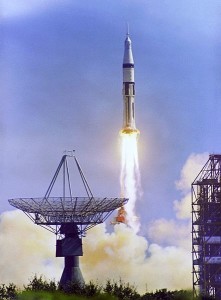 Of course, we did make it to the moon. The problems were fixed, and while Apollo 13 had it’s legendary oxygen tank explosion, that crew, amazingly, made it safely back to Earth. Space travel, while incredibly dangerous, has still has far more successes than failures, and the knowledge gained from this venture has constantly helped the human race on a whole.
Of course, we did make it to the moon. The problems were fixed, and while Apollo 13 had it’s legendary oxygen tank explosion, that crew, amazingly, made it safely back to Earth. Space travel, while incredibly dangerous, has still has far more successes than failures, and the knowledge gained from this venture has constantly helped the human race on a whole.
Apollo 1, Challenger, and Columbia are not the only space related deaths in history. Soyuz-1 and Soyuz-11 both had re-entry issues which resulted in the deaths of their crews, and there were many other accidents, both on the American and Soviet / Russian side, that resulted in the deaths of astronauts.
For the late January time frame, however, I try to remember all that the United States has lost in our exploration of the universe around us. I also try hard not to forget who Russia lost as well, but with all our disasters clumped up into the same week, I can’t help but take time out to reflect. I was talking to a friend as I wrote this article, and I think his words fit best for this.
“The road to knowledge, is paved with the graves of curious men and women. We move forward, only because of their sacrifice.”
[It might be worthwhile for the reader to know that in the time it took me to write this article, I actually broke down into tears thinking about the people involved in this story. Not just the Apollo 1 crew, but also the brave men and women on Challenger and Columbia, and the many others who have been lost in the quest to explore space.]
http://en.wikipedia.org/wiki/Apollo_1
http://en.wikipedia.org/wiki/List_of_spaceflight-related_accidents_and_incidents

